The Significance of Stamps Used on Bank Notes
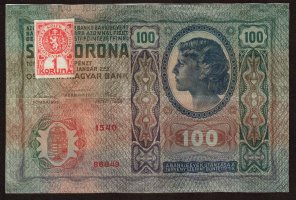 Every collector, sooner or later, runs into a bank note or two with adhesive stamps affixed to them. This article, originally written by Dr. Arnold Keller, the dean of paper money collectors, explores the various reasons governments altered the original use of bank notes by affixing stamps thereto. Some stamps were attached to merely authenticate the value of the note itself after a change in government, other uses had tax implications, while still other applications were efforts to alter the economy of a region or whole country. Many of these schemes were ingenious beyond belief, and many of them actually worked!
Every collector, sooner or later, runs into a bank note or two with adhesive stamps affixed to them. This article, originally written by Dr. Arnold Keller, the dean of paper money collectors, explores the various reasons governments altered the original use of bank notes by affixing stamps thereto. Some stamps were attached to merely authenticate the value of the note itself after a change in government, other uses had tax implications, while still other applications were efforts to alter the economy of a region or whole country. Many of these schemes were ingenious beyond belief, and many of them actually worked!
All examples of stamps found on bank notes which are known to the author are enumerated in this article. Undoubtedly there are other examples. Fellow collectors who know of other examples are invited to share their knowledge with us.
Click to download PDF here.
Japanese Sponsored Coin and Bank Note Issues for the Occupied Regions of China
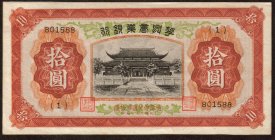 Occasionally, even today, one will encounter in a dealer's junk box or stock, a coin or piece of paper money whose origins lay in Japan's conquest and occupation of China (1937-1945). In order to administer such a vast country, Japan divided China up into administrative regions, each with its own financial management.
Occasionally, even today, one will encounter in a dealer's junk box or stock, a coin or piece of paper money whose origins lay in Japan's conquest and occupation of China (1937-1945). In order to administer such a vast country, Japan divided China up into administrative regions, each with its own financial management.
The coin and bank note issues of these Japanese "puppet" autonomous regions should not be viewed in isolation, as it is the totality of the story that is interesting. Coin collectors, perhaps, are aware of the coins, while bank note collectors are familiar with the various note issues. To appreciate the "total picture" as to what really transpired during the Japanese occupation, they must be viewed together.
Click to download PDF here.
A Monetary History of the Former German Colony of Kiaochou
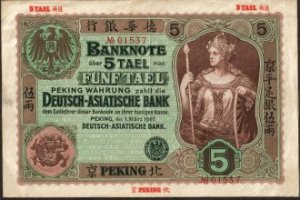 The defeat of China after two Opium Wars left the Ch'ing Dynasty weak and disorganized. European powers were quick to exploit this weakness. Both Britain and France placed exorbitant demands upon China in the form of monetary indemnity for expenses they had incurred during the wars, and for the outright concession of Chinese territory.
The defeat of China after two Opium Wars left the Ch'ing Dynasty weak and disorganized. European powers were quick to exploit this weakness. Both Britain and France placed exorbitant demands upon China in the form of monetary indemnity for expenses they had incurred during the wars, and for the outright concession of Chinese territory.
Sensing this weakness, other European powers were quick to seize territorial concessions and to set up their own 'spheres of influence' within China for commercial purposes. This is the story of how Germany became a colonial player in the China trade.
Click to download PDF here.
The Use of Bank Notes as an Instrument of Propaganda - Part II
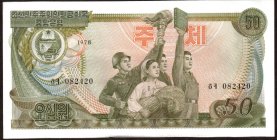 This article examines propaganda used on bank notes during the War in the Pacific against Japan, the Korean War, the Vietnamese War and finally the Gulf War in Iraq.
This article examines propaganda used on bank notes during the War in the Pacific against Japan, the Korean War, the Vietnamese War and finally the Gulf War in Iraq.
Click to download PDF here.
The Philippine Guerrilla Notes of Mindanao Island
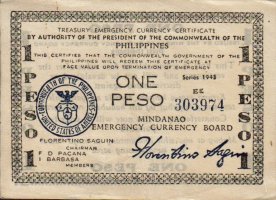
After the Japanese invaded the Philippine Islands at the outset of World War II they quickly occupied the coastal areas and principal cities throughout the archipelago. Upon the fall of Bataan and Corregidor in March 1942, it was thought that all major resistance had ended. This was not the case, however, as many Americans and Filipinos escaped to fight another day.
Groups of guerrilla fighters gradually formed in the remote mountainous interiors of the larger islands in order to assault the Japanese whenever surprise and advantage offered an opportunity. These men and their Filipino compatriots lived a life in the jungle which was fraught with peril. This is the story of but one such group, the guerrilla forces under the command of Lieutenant Colonel Willard Fertig. These men fought, harassed and resisted the Japanese on Mindanao Island until the end, in the process creating their own currency with which to carry out their war.
Click to download PDF here.